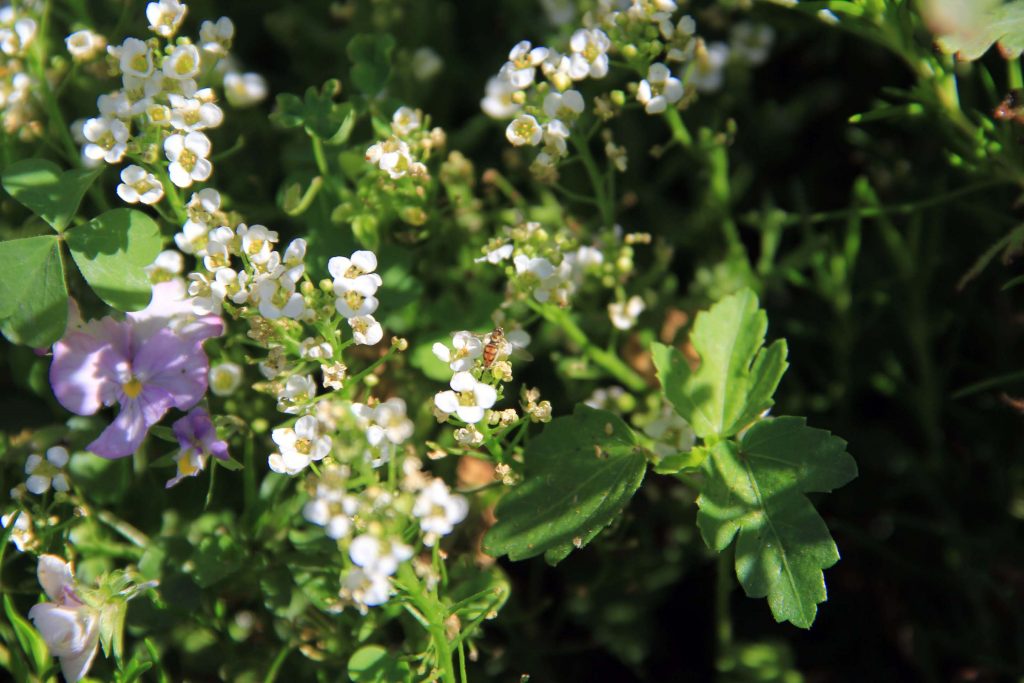Pollinator Week

Happy National Pollinator Week! If I say the word “pollinator”, you may immediately think of honey bees. It is true that honey bees are a huge help in pollinating many plants. However, they aren’t the only ones being celebrated (and for good reason). Bumble bees, birds, bats, flies, butterflies, beetles, and many more are an integral part of our ecosystem. If you are reading this blog, chances are you are not someone who lives in fear of bugs, but if you are I am here to tell you that without bugs our world would not be the same. I have come to love these creatures for their work ethic, happy sounds (buzz buzz!), and for the life they bring to our gardens. I also love pollinators simply because of how interesting they are to observe. They really want nothing to do with us in general and are focused on the food sources that we provide for them in the garden. Here are a few shots of what I was able to capture recently.

This honeybee was loving the bachelor button flowers (Centaurea montana) in the North Garden. I often see ants feeding on the nectar of these flower buds, but bees enjoy it too. Check out the beautiful fan-shaped petals that surround the bee here.

While walking through the North Garden, I also noticed what I believe is a long-horned bee (Eucera) hanging out on the foliage of goat’s beard (Aruncus ‘Horatio’). I often mistakenly call these bumble bees, but the coloring here is different and the horns are hard to miss. Doing the research to discover exactly what pollinators we have in our gardens is so interesting! It helps me learn more and more every day.
Watching pollinators at rest is fascinating. What do they do when they’re not scrambling from one flower to the next hunting for pollen? Sometimes I’ve noticed the honey bees hanging out on the water features getting a refreshing drink (bees need water too!) and cleaning themselves and each other. Looks like this bee was doing something similar. All that pollen gets sticky after a while and it is good to take a break and clean off the feet and face. Solid life advice here.

The bell-shaped flower of the aptly named bellflower (Campanula punctata ‘Pink Chimes’) is a fun one to watch. It took a minute to be able to capture a bee diving into the flower. Those bees are so quick! I did manage to snap a picture of this honey bee on his way to find the nectar inside the bell-shaped bloom.
Speaking of bees being quick, this honey bee was super hard to capture on camera. He feasted on the climbing rose flowers so quickly that he barely landed before he was off again looking for more nectar. As you can see, one second he’s there, the next he’s off and flying.
I want to highlight a couple other pollinators for you this week. The first is this little guy.

If you’re familiar with alyssum, then you know that the flowers on this annual plant are very small. This pollinator is even smaller! His wings nearly disappear they are so thin. This little pollinator is known as a hover fly. They seem to float in mid-air while they are scouting out their next source of nectar. A bonus to having these pollinators in our gardens is that their larva feast on aphids. We welcome these flies and their hungry babies!

I love catmint (Nepeta spp.) in the garden. It has a lovely flower and the foliage smells minty and fresh. The bees love it too. This sweat bee (seen burying himself in the flower in the middle above) was enjoying the catmint blooms in our Rose Garden.
I hope I have inspired you to go out in your own garden to observe the pollinators. They are a wonder to watch.
(If anyone reading this happens to be an entomologist, please forgive me if I am incorrectly naming these awesome bugs. And feel free to let me know if I have mis-identified anyone here. I’m happy to issue a correction.)


